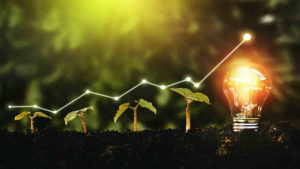The Ethical Investor: Stakes are high as the world awaits outcome from the COP26 climate summit

The Ethical ESG investor. Picture Getty Images
The Ethical Investor is Stockhead’s weekly look at ESG moves on the ASX. This week’s special guest is eInvest’s Tamas Calderwood.
The COP26 global conference starting this weekend in Glasgow has been billed as a last ditch effort to save the world’s climate crisis, and a lot is riding on it.
At stake will be the need for addressing the planet’s looming climate emergency – one that has led to devastating natural disasters, weather extremes, and food & water shortages.
The primary objective of COP26 is to reach agreements on a number of key targets – including keeping the goal of limiting global warming to below 2, preferably to 1.5 degrees Celsius, compared to pre-industrial levels.
According to scientists, each 0.1 degree Celsius of warmer temperature would have consequential impacts such as flooding, hunger and poverty – particularly in the poorer parts of the world.
Experts have also agreed that to achieve this goal, the two highest emitting countries, China and the US, will need to work together and play a bigger role.
Here’s a brief snapshot of what each of the two countries is expected to bring to the table at COP26.
China (the world’s largest CO2 emitter at 9.3 GT)
As the world’s largest polluter, China’s coal consumption will be a main point of discussion at COP26.
China has committed to net zero by 2060 and peak emissions before 2030, but some are concerned that power outrages seen in the country recently might cause Beijing to backslide on this plan.
Coals and fossil fuel currently make up around 87% of the energy mix in China, but the country boasts the world’s largest installed solar energy fleet, with 4 million panels installed high up in the Tibetan plateau.
Last month, President Xi announced that China will no longer finance overseas coal projects, but his likely absence at the summit has dampened the mood and put questions marks on China’s commitment to 1.5 degrees.
“China’s plan says emissions will peak before 2030 – for the world’s sake we need that date to be far sooner,” said Bernice Lee, the research director at Chatham House thinktank who spoke to the Guardian.
United States (4.8 GT)
US President Joe Biden is likely to head to COP26 empty handed as legislation for his $US1.5 trillion~2 trillion climate package is still being held up in Congress.
Biden had earlier vowed to slash US greenhouse gas emissions by half of 2005 levels by 2030, and has reconfirmed the 2050 zero target previously abandoned by President Trump.
Although remaining defiant, Biden faces a tough ride as political squabbles have led to a stalemate in Congress.
“The President will advance his climate agenda using every tool at his disposal, and can make significant progress in curbing emissions … and he could do that without Congress,” said Biden’s deputy press secretary Jean Pierre.
Fossil fuels – oil, natural gas, and coal – still make up 80% of the energy mix in the US, but Climate Action Tracker still rates the US’ domestic policies as better than China’s in getting to the 1.5 degrees target.
What’s happening in Australia
Meanwhile, PM Scott Morrison will go to COP26 with a firm commitment after securing a last minute deal with the Nationals to target net zero by 2050.
But the PM has rejected calls to upgrade the government’s previous commitment for a 26 to 28 per cent reduction by 2030 on 2005 levels.
“Australia will continue to build on our record of reducing emissions and achieve our targets in the Australian way,” he said.
The new 2050 plan depends upon an exisiting $20 billion investment into low emissions technologies that would take us to 85% in renewable energy usage, but how we are to reach the remaining 15% is less clear.
In the latest data by cosultant Meltwater, Australia has been ranked as a “D” by most global media and social media users, with more than 1,000 international publications having described Australia as “the worst greenhouse gas emitters”.
The country has also been the subject of some negative sentiment across international media heading into the COP26 event.
Global media CNN has even called out Australia’s climate plan as being the ‘weakest link’ among the G20 countries.
Notable ASX ESG-related news during the week
New Century Resources (ASX:NCZ)
The company has accelerated its ESG growth strategy by accepting a strategic investment from Sibanye Stillwater for a 19.99% equity position in NZC. The funds will be used to acquire Mt Lyell copper mine in Tasmania, a project that has strong green credentials and low carbon footprint.
Synertec Corp (ASX:SOP)
The company is developing the Composite Dry Powder (CDP) technology toward its promise of an environmentally friendly and economically scalable treatment of oil and gas drilling mud and cuttings. SOP has also committed to making ESG disclosures against the universal World Economic Forum (WEF) Stakeholder Capitalism framework.
Liontown Resources Limited (ASX: LTR)
Company director Jennifer Morris has agreed to join the company’s Board and seek election as an independent Non- Executive Director at the AGM to be held on 24 November. Liontown Chairman, Tim Goyder, said Morris’ vast experience in understanding and building high-performance teams, embedding ESG strategies and overall governance controls, will be invaluable to Liontown.
This week’s ethical investor – Tamas Calderwood, Distributions Specialist at eInvest
Investing is environmental, social and governance (ESG) is not all about the climate.
This week, Stockhead spoke to Tamas Calderwood at funds manager eInvest, to get his views on the current state of corporate governance within the ESG context.
How important is the ‘G’ or Governance for ESG investors?
Quite simply, if a company is governed well, it is more likely to do well for its shareholders. In the geopolitical world, it’s pretty obvious that good governance leads to better outcomes.
Compare, say, Australia to Zimbabwe. Or Canada to, say, North Korea.
They are extreme comparisons, but they do illustrate my point. Australia has generally sound institutions, strong democratic processes and is relatively free of corruption. Zimbabwe… not so much.
So too Canada, it is a liberal democracy with strong, independent institutions. It therefore generally does much better than North Korea, which is a hereditary communist dictatorship that has regular famines.
What about the reporting of corporate governance?
Corporate governance is, of course, something that exists only within a generally free market system.
ESG isn’t really a thing in Zimbabwe and North Korea. Public companies are required by law to disclose information to their shareholders and act within the law.
But despite the minimum legal requirements, there is a lot of variation between companies in their governance.
What is the ownership and control of the company? How is the board structured? How many directors are independent?
How much do executives earn? Are the books labyrinthine and evasive?
Not all of these metrics are easy to measure. However, overall patterns emerge.
Companies with transparent structures, independent boards, fair pay structures and diverse ownership are generally a better investment than those that sport the opposite.
eInvest’s Better Future Fund – IMPQ – uses its comprehensive ESG analysis to assess the governance of the companies it invests in, as well as the ones it doesn’t invest in.
Strong governance is definitely one of the keys to better performance.
Share prices today:
At Stockhead we tell it like it is. While Synertec Corp is a Stockhead advertiser, it did not sponsor this article.
Related Topics
UNLOCK INSIGHTS
Discover the untold stories of emerging ASX stocks.
Daily news and expert analysis, it's free to subscribe.
By proceeding, you confirm you understand that we handle personal information in accordance with our Privacy Policy.








